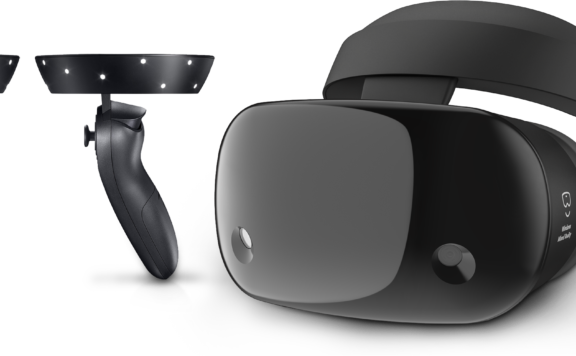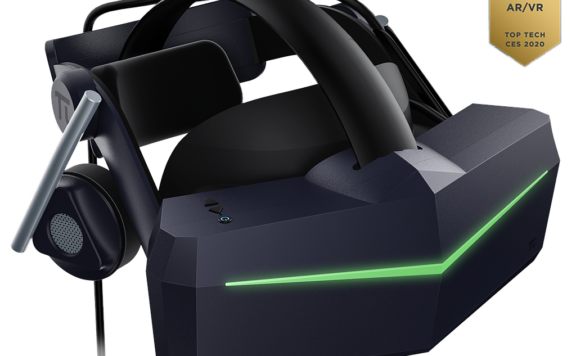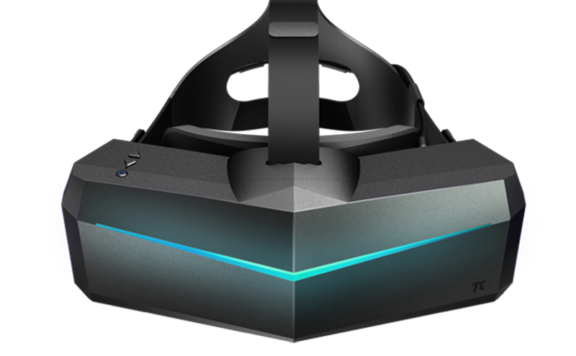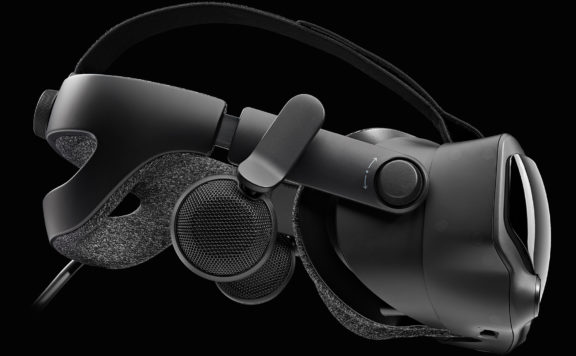For more than two years now the Quest 2 has ruled the VR consumer market. There was simply no company that could compete with Meta’s groundbreaking VR standalone headset. With the launch of the Pico 4 these days are now finally over.
The Pico 4 adopts the Quest 2’s winning formula of providing a capable but very affordable VR headset that does away with any of the hurdles that stood in the way of getting into VR before. Consumers new to VR do not need a gaming PC to use it and all the games can simply be purchased from within the headset. On top of that the Pico 4 is simply the better headset. It improves nearly everything the Quest 2 has already done well and even undercuts its price with its incredibly attractive pricepoint of 379UKP/429€.
There is no doubt that the Pico 4 will win the hearts of many new VR customers and even Quest owners that do not want to wait for a whole year before the Quest 3 arrives might think about upgrading. The VR competition just got more exciting! So let’s check out the Pico 4 in detail!
Features
The Pico 4 comes in two memory configurations, 128GB and 256GB. The smaller version is priced at 429€ while the bigger model will set you back 499€. The headset is still powered by the same Snapdragon XR2 chip that we know from the Quest 2 and other headsets but with 8GB of RAM we do get a 2GB bump. The biggest difference for sure is the way smaller form factor that is made possible by the use of so called pancake lenses. These clear lenses not only get rid of those concentric rings that are typical for Fresnel lenses, but they also make it possible to place the displays much closer to the lenses and therefore allowing for smaller headsets.
We are also looking at 2 high-res LCD panels now that each offer a resolution of 2160x2160pixels as opposed to just the single display of the Quest 2. Having two displays allows for real IPD adjustment, positioning the lenses and displays at exactly the right distance to correspond to the eyes of the user. IPDs from 58 to 72mm can be accommodated by the headset and the lenses will even be moved to the correct distance by a built-in motor. This alone is a huge improvement over the 3 lens positions of the Quest 2.
Another huge leap forward is the color passthrough mode that allows Pico 4 users to see the world around them in a much higher resolution as compared to what they have seen before in VR headsets. This mode also operates in full color since it is being facilitated by a single RGB camera in the front of the device.
The built in battery is situated in the back of the headstrap which makes the Pico 4 a very balanced device. There is no more front-heaviness, but you will also have to make do with this headstrap since you won’t be able to exchange it with a third party one as you can do with the Quest 2.
Build-Quality & Comfort
The Pico 4 is a very comfortable headset. It is well-balanced because of the battery placement and you will hardly feel the 586g on your head. As mentioned above you cannot exchange the headstrap for a third party one but the good part is that you won’t feel the need to because the Pico 4 is already comfortable out of the box.
It comes with an elite strap type of headstrap that allows for adjusting its size by using the adjustment wheel that is built into the back of the headstrap.
The facial gasket is exchangeable. and it snaps into the headset thanks to the built-in magnets. What a nice touch for such an inexpensive headset. The facial interface is made of a textile cloth-like material, not unlike what we have seen with the Valve Index or Reverb G2. It fits my face well, but it does leave VR birth marks at my forehead after prolonged sessions, so there is still room for improvements (I am looking at you, VR Cover!).
Even though the headset looks so small, actually there is plenty of room to fit in your glasses, a huge improvement over the Quest 2 where I could not do that. If you need more space for your glasses, you could add the glasses spacer between headset and facial interface, just like how we also did it with the Quest 2. The facial interface leaves some space out at the sides to make room for the temples of your glasses. On the one hand that is a nice touch for glasses wearers, unfortunately though on the other hand that extra space at the sides is the reason for light leakage if you are playing in a bright environment.
Build-quality is top notch. You will be surprised how premium the device feels. If you enjoyed your Quest 2, you will simply love what you are getting here. Pico has improved their headsets from generation to generation. The Pico 3 still could not compete with build quality of the Quest 2, especially as far as the controllers were concerned. This time around though the headset & the controllers feel premium. You can tell that Pico truly has set their own standards very high in order to compete with Meta on the big scale.
Visuals
Let’s get to the main event. Visuals! And yes, the Pico 4 does offer a very visible improvement over the Quest 2! Not only do we have higher resolution displays, we are also looking through better lenses and enjoy a wider FOV. All the improvements by itself are not huge by itself but altogether they just make for a better VR experience. Once you got used to the improvements of the Pico 4 and then after a couple of days go back to your old Quest 2 you will be quite shocked how you could ever be so fond of that rather bulky headset.
Lenses
The Pico 4 comes with so called pancake lenses. And they are huge! When you first see them you will be quite surprised. Pancake lenses have the advantage of allowing for smaller form factors since displays can be placed closer to the lenses. Moreover you have the advantage of not having to deal with god rays anymore, the glare that clearly made concentric rings of Fresnel lenses visible in high-contrast scenes. Are these lenses glare-free? I would not say so and we have a different kind of glare now. Something more resembling lens-flare that is also visible in high-contrast scenes. In my opinion this kind of glare is far less annoying than god rays though and therefore overall preferable.
The lenses offer a huge sweet spot and really nice edge to edge clarity. You put on the Pico 4 and you do not have to adjust the headset anymore to find the sharpest spot. You can directly enjoy virtual worlds and do not have to wonder why things are not looking as good as you hoped for.
Displays
Visuals in VR headsets depend on both lenses and displays. If both are great we have a winning combination. The Pico 4 displays offer a high 2160 x 2160 resolution. Even though the XR2 chipset does not drive them at their native resolution we still benefit from these panels because there is no more visible Screendoor Effect.
The colors are just alright though. In an A/B comparison with the Quest 2 I could not see a huge difference at all and I have without a doubt seen better LCD panels in terms of colors before. Blacks are simply LCD blacks and overall colors do not pop as much as for example in the Reverb G2. If you come from the Quest 2, you won’t see a difference, if you come from the G2 or Aero though, you surely will.
Also in terms of brightness the Pico 4 will not break any records. Pancake lenses do absorb quite a lot of the light that passes through them and therefore I have seen brighter headsets. I still do not use the Pico 4 at full brightness and I am absolutely satisfied with the results I am getting though. Just don’t expect having to bring sun glasses to your VR session.
Overall, the high-res displays in conjunction with the clear pancake lenses make for a beautiful VR experience that will become your standard in VR really quick. It will not knock your socks off, but it is simply a welcome step forward, especially in terms of the lenses!
FOV
Also the Field Of View is a clear step up from the Quest 2. We are not talking about Index level FOVs here but yo do see more horizontally as well as vertically. With my eyes (64mm IPD) I get to see 102° horizontally and 102° vertically in the Pico 4 compared to 94°H and 98°V in the Quest 2. Now also taking into consideration the better sweet spot and wider edge to edge clarity of Pico 4’s pancake lenses you simply see more in the new headset which increases immersion quite a bit.
Distortions
If you owned the Pico Neo 3 Link and suffered from distortions because the lens profile did not seem to be perfectly calibrated for your eyes I have good news for you. Thanks to real IPD adjustment and seemingly better lens distortion profiles, the Pico 4 now absolutely does away with this problem. Virtual Worlds are just as distortion free here now as they are in the Quest 2 or Valve Index.
Pass-Through
When I first put on the headset at Gamescom in Germany, I was quite shocked by the color passthrough. It was sooo good. My first reaction was: wow, that looks just as good as the color passthrough of the Varjo XR-3, a business headset that costs thousands of dollars. After the first euphoria had disappeared I realised though that there is one huge difference compared to that Varjo passthrough: the missing sensation of 3D! No wonder, because the solution here is based on a single RGB camera.
But even though this is not quite the real world yet, this color passthrough mode is capable and so much better than what we have with the Quest 2. Colors just look as good as in the real world and the resolution is high enough to read text messages from your phone. Try that on your trusty old Quest! So far passthrough mode is only used to set up your guardian but developers will be able to use it for games and apps soon I was told.
Audio
The Pico 4 comes with built-in speakers comparable to what you can find in the predecessor or in the Quest 2. Gladly Pico also improved them and they are much better now than they were in the Pico Neo 3 Link. These are now just as good, if not better than the built in speakers of the Quest 2. Better because I can turn up the volume and have a louder experience than Quest 2 while retaining a similar audio quality. If you were satisfied with the built-in audio solution of the Quest 2 you will appreciate what the Pico 4 is putting on the table here. For me the built-in solution is good enough and I do not actually need to look for headphones.
Talking about headphones: unfortunately the Pico 4 does not come with a 3.5mm headphone jack. All you get is a single USB-C port that will be responsible for all the cabled connections you make with the device. Ouch! So if you want to use headphones you either have to go with bluetooth ones (latency, booo!!) or you cheat and use a USB-C to 3.5mm adapter to still hook up your favorite headphones. Of course you could also use headphones that come with a USB-C dongle.
Microphone
YES! I am so happy about the built-in microphone. When I first used the Pico 4 to do a livestream on YouTube, the audience was pretty baffled. It sounded just as good as the mic of the Valve Index! And that means something since the Valve Index without a doubt had the best mic of any VR headset so far. Now that I have used the Pico 4 in livestreams and also recorded quite a bit of content with it I can come to the conclusion that this is indeed a very good mic. You will have no problems making yourself heard in multiplayer games and even if you want to record your gameplay for Youtube you won’t be forced to use an external mic. Well done Pico, I am impressed. I have a thing for good mics and getting such a nice one included in such a well-priced headset is just a huge plus for me.
Controllers & Tracking
The controllers feel just as premium as the headset and I am very glad about that part. The Pico Neo 3 controllers were alright but you could tell that build quality could simply not compare to the Oculus Touch controllers. This has changed and the controllers cannot just compete against Oculus Touch, in my opinion they even surpass them in terms of design and function. But why? Well, first of all, the controller rings are not on top of the controllers anymore, but they are arching over the user’s hands. This design had been chosen to prevent the controllers from touching each other when in close vicinity. And it works! You can now more easily reload a gun or draw a bow without your controllers touching each other.
The Pico 4 controllers come with the same industry standard button layout that Oculus Touch has introduced. On top of that we do get a bonus button though that allows us to quickly take a screenshot or start a video recording if you long press it. It might not sound exciting at first, but for a content creator like me this is simply a huge quality of life improvement.
A question that I have been asked over and over again is if the controllers would offer capacitive touch functions for the buttons. And i am glad to tell you that capacitive touch is hereby confirmed! This feature was not communicated by Pico at all so I had to find it by coincidence when I was playing Bonelab on the device. I am glad I did so I can make all of you VR Chat players happy now!
Each of the controllers takes two AA batteries which will give them about 80h of playtime. Probably not as much as Oculus Touch can do, but enough so you do not have to worry about empty batteries for most of the time.
Tracking is just as good as Quest 2. The controllers are also tracked by the 4 cameras on the front of the headset. Pico had already nailed tracking with the predecessor and I am glad that I can say the same here. Tracking volume as well as tracking precision are great and in direct A/B comparison with the Quest 2 I would even see slight advantages here for Pico. I can’t tell if it is because of the controller ring or camera placement but it is save to say you won’t even think about tracking as it never gets in your way.
Battery Life
The Pico 4 comes with a sizeable 5300mAh battery that is located at the back of the headstrap. If you would simply compare capacities you might believe that this battery could power the device much longer than the 3640 mAh battery of the Quest 2. That is not true though and the Pico 4 would only survive for a maximum of 2h in my experience. I assume that the displays simply have to be powered at a higher brightness because of the pancake lenses and that the engineers simply have not yet optimized power consumption to the maximum. I have therefore already modded my Pico 4 using third party solutions but I’d rather have the device last for 3h by itself.
Pico 4 As A Standalone Headset
The Pico 4 is a so called standalone headset. You do not need a gaming PC to use it which makes it extremely attractive to people who want to get into VR for the first time. And Pico does everything right to cater to all these VR newcomers. Onboarding is a breeze, you do not even need to pair the headset with a phone. You can do it all in your headset. You will need to set up a Pico account and all you need for that is any email address. Once you have done that, you get access to your home environment which without a doubt is inspired by what Meta has done with the Quest before. Imitation is the sincerest form of flattery they say and Pico seems to really want to flatter their big competitor here. Everything is just as polished as in the Quest environment and even though you may not have all the bells and whistles that came with the uncountable updates to the Quest home environment it never feels as if something would be truly missing here. Pico has done a great job with their Pico OS. Not only have they managed to match the great UI of the Quest, but there are even functions that are simply better.
Sideloading for example. On the Quest 2 you need to put the device into developer mode to install .apks and jump through all kinds of hoops to make that happen. The Pico 4 is much more open to sideloading. Heck, it is built into the operating system! You simply load any .apk onto the device, either by connecting it to your computer or by downloading it using the built-in browser, then you find the file with the file manager and then you can simply install the app with a click of a button. I was truly impressed to find out how simple it is to install Discord for example, now allowing me to talk with my friends while playing games. But well, that is already a topic for more advanced users. Let’s talk about how good the store is.
Store
I was positively surprised though when I first checked out what is available in the Pico store. To call it a competent store would quite fit the bill here. There are hundreds of games already and most of the the big games that you want to play are here: After The Fall, Demeo, In Death Unchained, Arizona Sunshine, Rec Room and so on and so forth. It feels like there are new titles joining on a daily basis. And that does not come as a surprise. For developers and studios that were not bought by Meta, it is a no-brainer to port their games to the Pico platform and sell it there. Because not only does it mean reaching new customers in Western countries, it also means getting access to the huge Chinese market that simply cannot be reached by Meta. So even though right now not all the big games are there yet, this is for sure going to change really soon. In my opinion we are going to have those two competing stores that have all the same games but only differentiate themselves by their exclusives. Just as it is in Playstation vs. XBox now.
So if you do not insist on playing Meta’s exclusive games like Beat Saber, Population One or Resident Evil 4, you do not have to worry about getting into the Pico ecosystem. You will find a great selection of games and as mentioned above, that selection is growing constantly.
PCVR Streaming
Boy was I disappointed when I found out that the Pico 4 would not come with a dedicated DisplayPort connection like the Pico Neo 3 Link. I have a huge SteamVR library and I appreciate the high fidelity experiences that my gaming PC can push to my favorite VR headsets. Having a dedicated DP connection would have made this headset just perfect, because losless raw PCVR goodness is what us VR enthusiasts love and crave.
I had made my peace with it and simply looked forward to the Pico 4 as a standalone headset that would bring the long needed competition to the VR market, but personally I did not regard it as a headset that I would use for playing my SteamVR games.
But then Virtual Desktop for Pico happened. And BOOM, I fell in LOVE! Wow! I could not quite believe what I was seeing. I first tried Half-Life Alyx and was simply blown away by how amazing it looks like in the Pico 4 using Virtual Desktop as a streaming app. I was so excited in fact that I directly made a through-the-lens video and posted it before I even made the unboxing video.
This single app has made the Pico 4 a viable PCVR headset for me, and I would even go as far as calling the Pico 4 with Virtual Desktop the best wireless PCVR headset that is currently on the market. If you enjoyed VD on Quest 2 you will love it on Pico 4 because it will stream content at an even higher resolution than it is able to on Quest 2. If your beefy PC can support “Ultra” settings, you will stream at a whopping 3160 x 3160p, and that is Reverb G2 territory in terms of render resolution! Then take into account the better lenses and the bigger FOV, the comfort and you really got yourself a beautiful wireless VR setup there. On top of that, Virtual Desktop even allows you to play Oculus Rift games, so if you still want to play your Lone Echos or Asgard’s Wraths…knock yourself out!
Pico also supplies you with their own streaming application out of the box. So SteamVR streaming is built into the Pico 4. You can play via wifi, just like Virtual Desktop, but you can also use a USB-C cable if you prefer a wired connection to your PC. The Pico streaming app works well enough, both wired as well as wireless. But it simply cannot compete with Virtual Desktop so therefore I highly recommend you to spend the 20 bucks for the app and to never look back, because even in wired mode it only allows for a maximum resolution of 2160x2160p. The Pico 4 can look so much better than that, why not give it to us, Pico?!
So how about simmers? Should people addicted to MSFS or DCS world dump their Reverb G2s or Pimax 8KXs in favor of the Pico 4? I would have said YES if the Pico 4 came with that direct DP connection but as it stands those dedicated PCVR headsets will simply give you better performance and an uncompressed picture that will still look better than even the best visuals that VD on “Ultra” can pump onto the system.
The China Factor
Pico is a Chinese company that was acquired by Bytedance, the parent company of TikTok. That’s where all the money comes from that is needed to develop, manufacture and market a headset that could truly challenge Meta’s market position in the VR industry. Pico now has the resources and knowledge to make it all happen. And they will, Bytedance is playing to win, just like they do with TikTok. And they are good at winning.
The Pico 4 is not just a one hit wonder, it is the beginning of a new era for consumer VR that is not anymore led by Meta and Marc Zuckerberg. Pico will churn out this kind of flagship devices on a yearly basis from now on and it will be Meta that has to react instead of leading the way. It is them who have to play catch up now with the Quest 3 that is still a whole year out. It will likely have to compete with the Pico 5.
You could be happy about such a huge player joining the ring. But of course you could also be concerned about it being a Chinese company that has these worldwide aspirations. A Chinese company that has to abide by the rules laid out by the Chinese government. And for those of you who do not feel comfortable buying Xiaomi phones or DJI drones because of just that, you will likely also not support the rise of Pico. But this is truly a decision that each of you has to make for yourselves, I simply wanted to put this in here as well since it is something that should be taken into consideration.
Conclusion
The Pico 4 is a fantastic VR headset that I can not only highly recommend to people that want to get into VR for the first time, but even to those of you who are looking for a wireless headset to stream their PCVR content with. The headset beats the Quest 2 in terms of hardware in nearly every imaginable way and also shows that even on the software side it is not too far away from the current market leader.
The Pico 4 offers one of the best wireless VR experiences that consumers could currently find on the market and it does so with an astonishing price that is tough to beat. Pico is beating Meta at their own game, adopting the Quest 2 formula and improving on it wherever they could.
For consumers new to VR, it is tough to recommend the 2 year old Quest 2 over the new Pico 4, especially when they are not insisting to play the handful of exclusives to the Quest platform. And even those who are already invested in the Meta platform will feel the attraction of this sexy piece of VR hardware.
The competition is finally here! Let the games begin!





